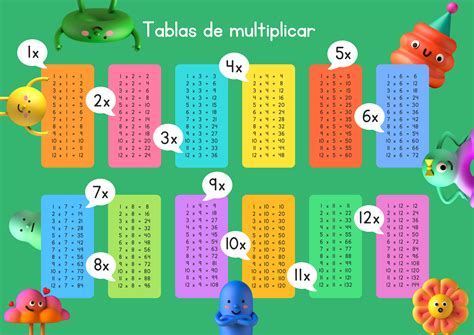Tabas

Nestled in the vast expanse of the Iranian Plateau, Tabas stands as a unique and captivating city with a rich history and an intriguing cultural identity. This ancient city, located in the heart of Iran, has endured the test of time and continues to flourish with a vibrant community and a thriving economy. Tabas is renowned for its resilient spirit, exemplified by its ability to bounce back from adversity, most notably the devastating earthquake that struck the region in 1978.
With a deep-rooted connection to its past, Tabas boasts a cultural heritage that is both diverse and authentic. The city's architecture is a testament to its historical significance, with ancient ruins and traditional buildings standing side by side with modern structures, creating a unique blend of old and new. The local cuisine is another highlight, offering a delightful fusion of traditional Persian flavors with regional specialties that are sure to tantalize the taste buds of visitors.
Unveiling the Rich History of Tabas

The historical narrative of Tabas is as fascinating as it is complex. The city’s origins can be traced back to the early Islamic era, with evidence of human settlement dating back to the 7th century. Over the centuries, Tabas has witnessed the rise and fall of various dynasties and has played a significant role in the political and cultural landscape of Iran.
One of the most pivotal moments in Tabas' history was the devastating earthquake of 1978. This natural disaster, which claimed countless lives and left the city in ruins, became a defining moment for the community. The resilience and determination of the people of Tabas shone through as they rebuilt their city, stone by stone, and transformed their tragic loss into a symbol of hope and strength.
Today, the city stands as a testament to the indomitable spirit of its people. The modern Tabas is a bustling urban center, with a vibrant economy driven by agriculture, industry, and tourism. The city's strategic location, nestled between the Zagros and Alborz mountain ranges, has facilitated its growth and development, making it a key hub for trade and commerce.
Cultural Heritage and Attractions
Tabas is a treasure trove of cultural heritage and historical attractions. The city’s ancient ruins, such as the remnants of the Tabas Castle and the Old Bazaar, offer a glimpse into the rich past of the region. These sites, which have survived the test of time, provide a fascinating insight into the architectural and cultural evolution of the city.
The traditional architecture of Tabas is a sight to behold. The city is home to numerous historical houses and buildings, many of which have been meticulously restored and preserved. These structures, with their intricate designs and unique features, offer a tangible connection to the past and provide a glimpse into the daily lives of the people who once inhabited them.
For those with a penchant for natural beauty, Tabas has much to offer. The surrounding landscape is a tapestry of diverse terrains, from rugged mountains and vast deserts to lush oases and fertile plains. The Tabas Desert, with its otherworldly beauty, is a popular destination for adventure seekers and nature enthusiasts. The region's unique flora and fauna, including rare plant species and desert wildlife, make it a haven for those interested in ecological tourism.
| Attraction | Description |
|---|---|
| Tabas Castle Ruins | Ancient fortress ruins dating back to the Islamic era, offering a glimpse into Tabas' rich history. |
| Old Bazaar | A traditional marketplace with a vibrant atmosphere, showcasing the city's cultural heritage. |
| Historical Houses | Restored and preserved traditional homes, providing a window into the past and architectural excellence. |
| Tabas Desert | A unique desert landscape with rare plant species and desert wildlife, ideal for ecological tourism. |

Exploring the Vibrant Economy of Tabas

The economic landscape of Tabas is as diverse as its cultural heritage. The city’s strategic location and abundant natural resources have contributed to its economic prosperity and resilience.
Agriculture plays a significant role in Tabas' economy, with the region being a major producer of a variety of crops, including wheat, barley, and fruits. The fertile plains surrounding the city provide an ideal environment for farming, and the local farmers have honed their skills over generations, adapting to the unique climate and soil conditions.
Industry is another key sector in Tabas. The city is home to several large-scale industrial complexes, particularly in the fields of mining and manufacturing. The abundance of natural resources, such as minerals and metals, has attracted investment and spurred economic growth, creating job opportunities and driving the local economy forward.
Tourism is an increasingly important sector in Tabas. The city's rich cultural heritage, historical attractions, and natural beauty make it a popular destination for domestic and international travelers. The local government and businesses have recognized the potential of tourism and have been working diligently to promote and develop the industry, with initiatives ranging from infrastructure development to cultural preservation and sustainability projects.
Agriculture and Food Industry
The agricultural sector in Tabas is a thriving and diverse industry. The region’s unique climate and soil conditions have fostered the growth of a wide range of crops, with each village and community specializing in its own unique produce.
Wheat and barley are the staple crops of Tabas, with vast fields stretching across the plains. These crops not only provide a vital source of food for the local population but also contribute to the city's economy through exports. The local farmers, with their traditional knowledge and sustainable practices, have perfected the art of cultivating these crops, ensuring high yields and quality.
In addition to wheat and barley, Tabas is renowned for its fruit production. The region's mild climate and fertile soil are ideal for growing a variety of fruits, including grapes, pomegranates, and apples. The local orchards are a sight to behold, with rows of vibrant trees bearing delicious fruits. These fruits not only contribute to the local diet but also find their way into the city's vibrant food industry, with local chefs and producers incorporating them into a variety of culinary delights.
The food industry in Tabas is a vibrant and innovative sector. The city is home to numerous traditional and modern food businesses, ranging from small family-run bakeries to large-scale food processing plants. These businesses utilize the fresh produce from the surrounding farms to create a wide range of food products, from traditional Persian sweets and pastries to modern convenience foods.
| Crop | Production Highlights |
|---|---|
| Wheat | A staple crop with high yields, contributing to local food security and exports. |
| Barley | Grown in abundance, providing a versatile grain for local consumption and industry. |
| Grapes | A key fruit crop, used for fresh consumption, wine production, and local cuisine. |
| Pomegranates | Renowned for their quality, with a vibrant red color and sweet-tart flavor. |
| Apples | A popular fruit, known for their crisp texture and delicious taste. |
The Future of Tabas: Prospects and Challenges
As Tabas looks towards the future, it faces both exciting prospects and significant challenges. The city’s resilience and adaptability have positioned it well for continued growth and development, but several key factors will shape its trajectory.
One of the primary challenges for Tabas is the ongoing issue of water scarcity. The region's arid climate and limited water resources have long been a concern for the local population and businesses. As the city continues to grow and develop, the demand for water is likely to increase, putting further strain on the existing infrastructure and resources. Addressing this challenge will require innovative solutions, such as water conservation measures, recycling initiatives, and the development of sustainable water management practices.
Another key challenge for Tabas is the need to diversify its economy. While agriculture, industry, and tourism have been the driving forces behind the city's economic growth, there is a need to further develop and promote other sectors. This could include the expansion of the service industry, particularly in areas such as healthcare, education, and technology. By fostering a diverse and dynamic economy, Tabas can ensure its long-term prosperity and resilience.
Despite these challenges, the future prospects for Tabas are bright. The city's strategic location, abundant natural resources, and rich cultural heritage provide a solid foundation for continued growth. With the right investment and development strategies, Tabas can position itself as a leading economic and cultural hub in the region.
One of the key areas of focus for the future of Tabas is the promotion of sustainable development. The city has already taken significant steps towards this goal, with initiatives such as the development of renewable energy sources and the implementation of eco-friendly practices. By continuing to prioritize sustainability, Tabas can not only ensure the long-term health of its environment but also attract investment and tourism from those who value responsible and eco-conscious practices.
Sustainable Development and Innovation
Tabas is committed to sustainable development and has implemented several innovative initiatives to achieve this goal. One of the key areas of focus has been the development of renewable energy sources. The city has invested in solar and wind energy projects, harnessing the abundant natural resources of the region to generate clean and sustainable power.
In addition to renewable energy, Tabas has also embraced eco-friendly practices in various sectors. The agricultural industry, for example, has adopted sustainable farming methods, such as organic farming and precision agriculture, to minimize the environmental impact of crop production. The city has also promoted the use of eco-friendly materials and technologies in construction, with many new buildings incorporating green design elements and energy-efficient features.
Furthermore, Tabas has recognized the importance of preserving its rich cultural heritage for future generations. The local government and community organizations have been working together to restore and preserve historical sites, traditional architecture, and cultural practices. This not only enhances the city's appeal as a tourist destination but also ensures that the unique cultural identity of Tabas remains intact.
| Sustainable Initiative | Description |
|---|---|
| Renewable Energy | Solar and wind energy projects to generate clean power, reducing reliance on fossil fuels. |
| Sustainable Agriculture | Organic farming and precision agriculture practices to minimize environmental impact. |
| Eco-Friendly Construction | Use of green design elements and energy-efficient features in new buildings. |
| Cultural Preservation | Restoration and preservation of historical sites and traditional architecture. |
Tabas: A City of Resilience and Cultural Richness
In conclusion, Tabas is a city that embodies resilience, cultural richness, and a deep connection to its historical roots. From its ancient ruins to its vibrant modern attractions, Tabas offers a unique and captivating experience for visitors and residents alike.
The city's ability to bounce back from adversity, most notably the 1978 earthquake, serves as a testament to the strength and determination of its people. This resilience has not only shaped the physical landscape of Tabas but has also influenced its cultural identity, creating a community that is both proud and welcoming.
As Tabas continues to grow and develop, it faces both challenges and opportunities. The city's strategic location, abundant natural resources, and rich cultural heritage provide a solid foundation for continued prosperity. By embracing sustainable development, diversifying its economy, and preserving its unique cultural identity, Tabas can ensure a bright and resilient future.
Whether you're exploring the ancient ruins, indulging in the delicious local cuisine, or simply immersing yourself in the vibrant culture of Tabas, there's no denying the charm and allure of this remarkable city. Tabas is a place where the past and present intertwine, creating a unique and captivating experience that leaves a lasting impression.
FAQ
What is the best time to visit Tabas?
+
The best time to visit Tabas is during the spring and autumn months when the weather is mild and pleasant. The city’s natural beauty is at its peak during these seasons, and you can enjoy outdoor activities without the extreme heat of summer or the cold of winter.
Are there any must-visit attractions in Tabas?
+
Absolutely! Tabas is home to numerous must-visit attractions. Some of the top choices include the Tabas Castle Ruins, which offer a glimpse into the city’s ancient past, and the Old Bazaar, where you can immerse yourself in the vibrant local culture and shop for traditional handicrafts. The Tabas Desert is also a unique attraction, offering a chance to explore the otherworldly beauty of the Iranian desert landscape.
What are some traditional dishes I should try in Tabas?
+
Tabas is known for its delicious traditional cuisine. Some dishes you shouldn’t miss include Ash Reshteh, a hearty soup made with noodles, beans, and herbs, and Chelow Kabab, a classic Persian dish of grilled meat served with saffron-infused rice. Don’t forget to try the local sweets, such as Gaz, a traditional Iranian nougat made with honey and pistachios.



